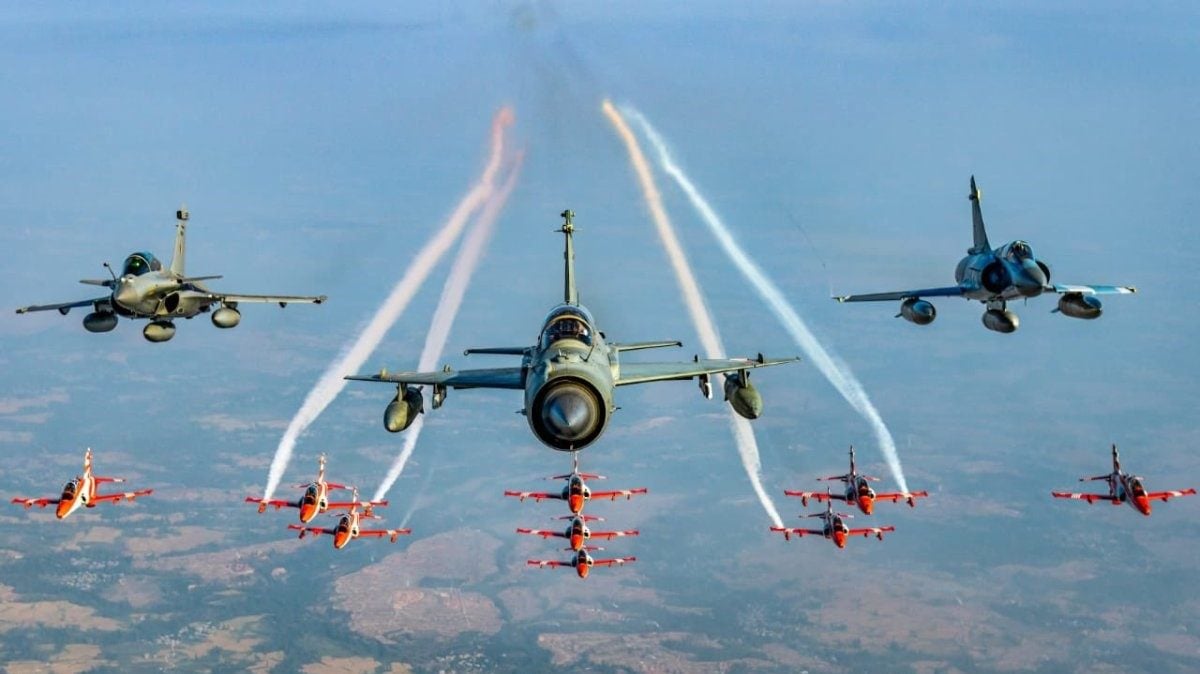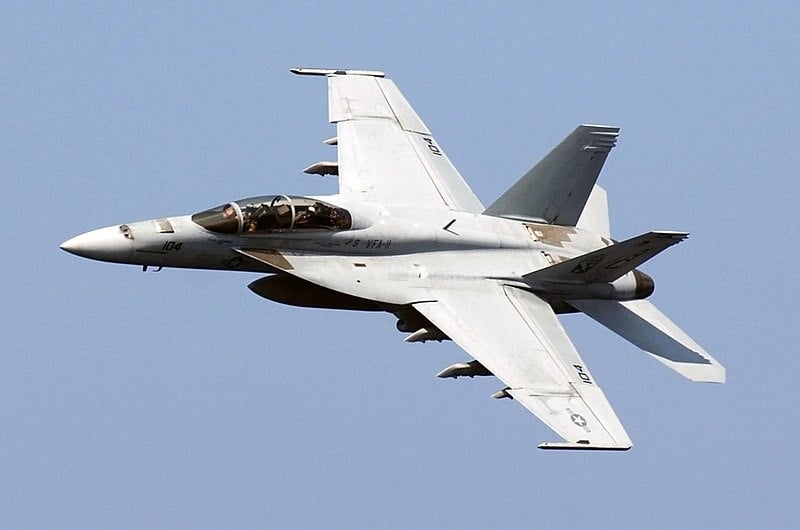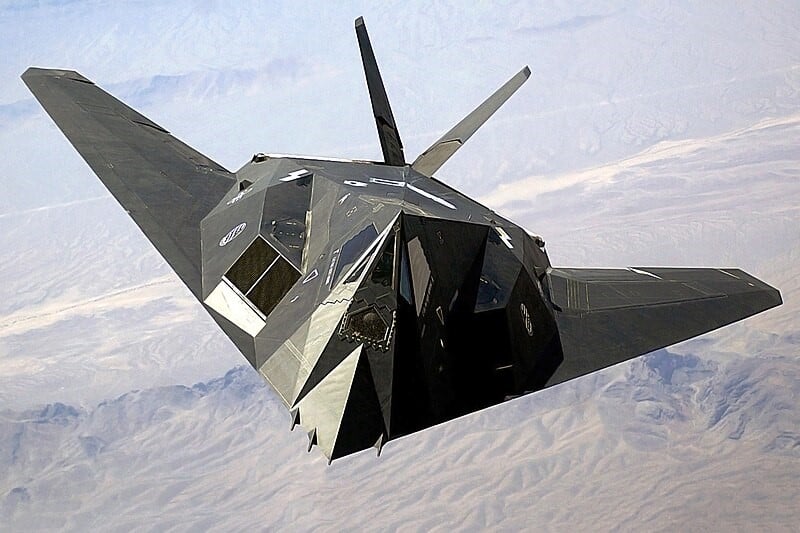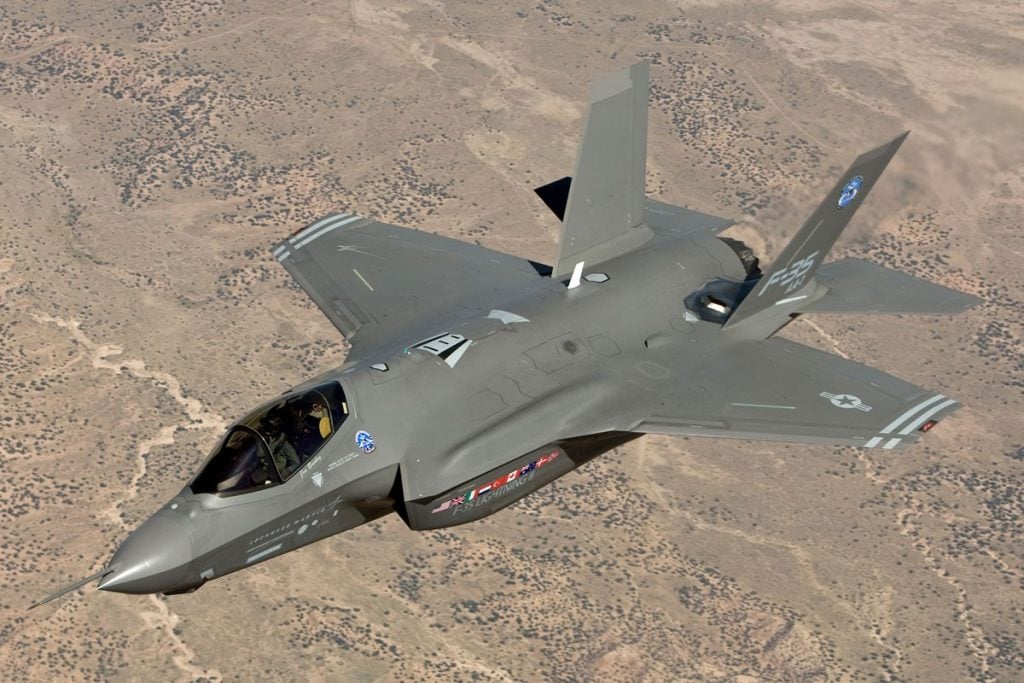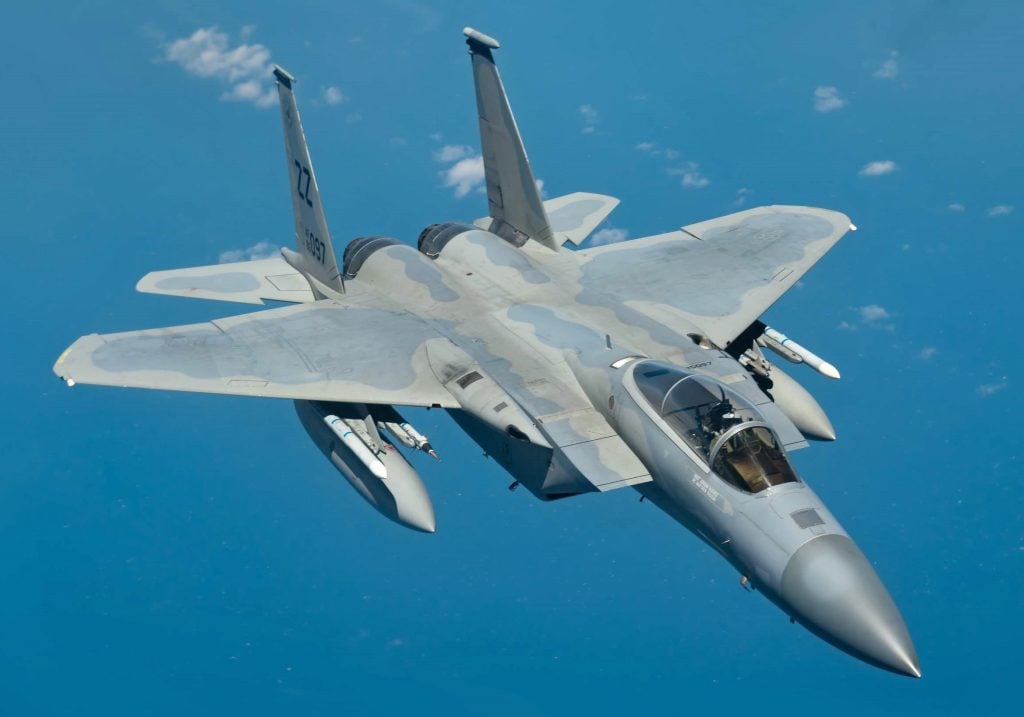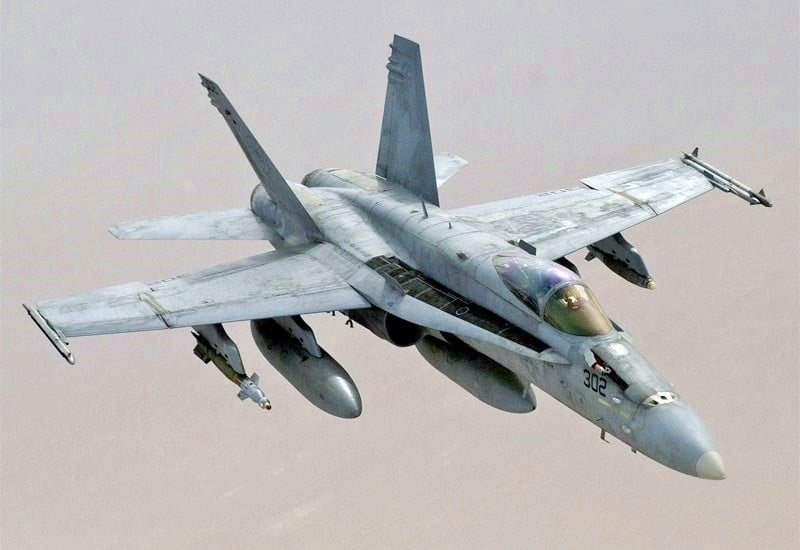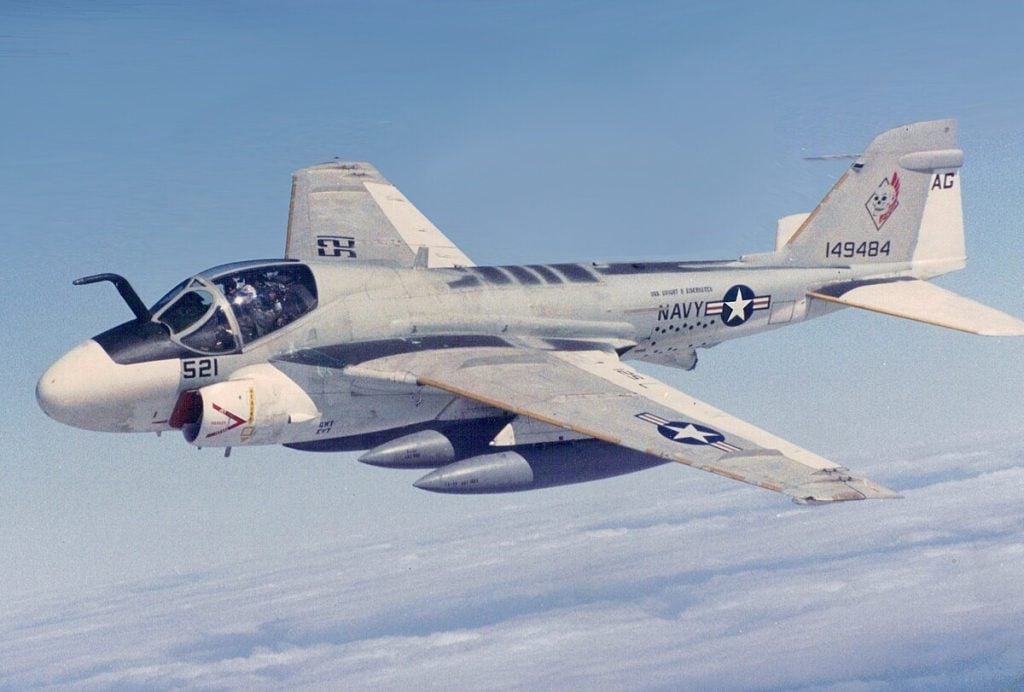In the high-stakes realm of modern air warfare, the ability to operate effectively under the cover of darkness can provide a decisive advantage. As technology continues to evolve, the United States has developed a fleet of advanced fighter jets specifically designed for nighttime missions.
These Top 5 US Fighter Jets Dominating Night Skies are equipped with state-of-the-art avionics, sensors, and targeting systems that enable pilots to achieve air superiority, precision strikes, and comprehensive situational awareness even in low-visibility conditions.
Top 7 Military Habits for Defence Aspirants
1. Lockheed F-117 Nighthawk
The Lockheed F-117 Nighthawk stands as a pioneering achievement in the annals of military aviation. Developed by the renowned Skunk Works division, this single-seat, subsonic aircraft was the first operational stealth fighter, designed to counter the threat posed by sophisticated Soviet surface-to-air missile systems. Entering service in 1983, the F-117 was equipped with cutting-edge digital navigation and attack systems, enabling it to execute effective combat missions during both day and night operations.
Thermal Imaging and Laser Targeting
At the heart of the F-117’s nighttime capabilities was its state-of-the-art thermal imaging infrared system and laser rangefinder/designator. These advanced sensors allowed the aircraft to precisely identify and engage enemy targets, even in low-visibility conditions. The thermal imaging system provided the pilot with a clear thermal signature of the target, while the laser designator could lock onto the target’s unique heat signature, enabling highly accurate weapon delivery.
Fly-by-Wire for Enhanced Maneuverability
In addition to its sophisticated targeting systems, the F-117 also featured a cutting-edge fly-by-wire (FBW) flight control system. This digital system enhanced the aircraft’s maneuverability, allowing the pilot to execute precise and agile maneuvers during nighttime missions, further bolstering the Nighthawk’s combat effectiveness.
Operational History and Legacy
The F-117 Nighthawk’s operational history is marked by its impressive combat record, with only a single aircraft ever being shot down in action. This remarkable achievement underscores the aircraft’s advanced stealth capabilities and the skill of its pilots. Though the F-117 was retired from active service in 2008, its legacy as a pioneering stealth night fighter continues to inspire the development of even more capable aircraft for the modern battlefield.
2. Lockheed Martin F-35 Lightning II
The Lockheed Martin F-35 Lightning II represents the latest generation of fighter aircraft, designed to excel in a wide range of missions, including nighttime operations. As a fifth-generation, single-engine stealth fighter, the F-35 is equipped with a suite of advanced sensors and avionics that provide pilots with unparalleled situational awareness and targeting capabilities, even in low-light conditions.
Helmet-Mounted Display for Enhanced Visibility
A key component of the F-35’s nighttime capabilities is its state-of-the-art Helmet Mounted Display System (HMDS). This cutting-edge technology projects critical flight and targeting information directly onto the pilot’s helmet visor, allowing for seamless integration of the aircraft’s sensors and systems. The HMDS provides the pilot with a comprehensive, 360-degree view of the battlespace, enhancing their ability to detect, track, and engage enemy targets during nighttime missions.
Sensor Fusion for Comprehensive Awareness
The F-35’s advanced sensor suite, including the Electro-Optical Targeting System (EOTS) and Electro-Optical Distributed Aperture System (DAS), fuses data from multiple sources to provide the pilot with an unparalleled understanding of the tactical environment. This sensor fusion enables the F-35 to effectively execute Suppression of Enemy Air Defense (SEAD) missions, a critical capability for nighttime operations.
Operational Flexibility and Versatility
The F-35’s multirole design allows it to excel in a wide range of missions, from air superiority to ground attack, making it a highly versatile platform for both day and night operations. This operational flexibility, combined with its advanced stealth and sensor capabilities, makes the F-35 a formidable asset in the modern battlespace, particularly during nighttime engagements.
How NCC Cadets can Apply for Para Basic Course?
3. McDonnell Douglas F-15E Strike Eagle
The McDonnell Douglas F-15E Strike Eagle is a highly capable all-weather, multi-role strike fighter that has been specifically designed for both day and night missions. Equipped with a comprehensive suite of advanced avionics and electronic warfare systems, the F-15E is a formidable platform for deep-strike and close air support operations, even in the most challenging low-visibility conditions.
Tactical Electronic Warfare System (TEWS)
At the heart of the F-15E’s nighttime capabilities is its Tactical Electronic Warfare System (TEWS), which integrates all of the aircraft’s countermeasures and sensor systems. This comprehensive system provides the pilot with enhanced situational awareness and a robust defense against enemy threats, ensuring the aircraft’s survivability during nighttime missions.
Joint Helmet Mounted Cueing System (JHMCS)
The F-15E is also equipped with the Joint Helmet Mounted Cueing System (JHMCS), which allows the pilot to intuitively cue weapons and sensors simply by looking at a target. This integrated line-of-sight cueing technology enhances the pilot’s ability to detect, track, and engage enemy targets, even in low-light conditions.
Comprehensive Electronic Warfare Suite
In addition to its TEWS and JHMCS, the F-15E is also outfitted with a range of other advanced electronic warfare systems, including radar warning equipment, an ALQ-131 ECM pod, and the state-of-the-art AN/ALQ-250 EPAWSS digital electronic warfare suite. These systems work in concert to provide the pilot with a comprehensive defense against enemy threats, further bolstering the aircraft’s effectiveness during nighttime operations.
4. McDonnell Douglas F/A-18 Hornet
The McDonnell Douglas F/A-18 Hornet is a versatile, twin-engine, carrier-capable fighter aircraft that has been extensively used for nighttime operations, particularly in the context of naval aviation. Equipped with advanced avionics and sensor systems, the Hornet is capable of executing a wide range of missions, from air superiority to ground attack, even under the cover of darkness.
Joint Helmet Mounted Cueing System (JHMCS)
Like the F-15E Strike Eagle, the F/A-18 Hornet is outfitted with the Joint Helmet Mounted Cueing System (JHMCS), which provides the pilot with intuitive access to critical flight and targeting information. This integrated line-of-sight cueing technology enhances the pilot’s ability to detect, track, and engage enemy targets during nighttime missions, further improving the Hornet’s combat effectiveness.
Night Vision Cueing and Display (NVCD)
In addition to the JHMCS, the F/A-18 Hornet also features the Night Vision Cueing and Display (NVCD) system, which provides the pilot with enhanced night vision capabilities. This advanced system, known as QuadEye™, offers a high-resolution, full-color display that seamlessly integrates with the aircraft’s other sensors and avionics, enabling the pilot to maintain superior situational awareness and target acquisition during nighttime operations.
Carrier-Capable Nighttime Operations
The F/A-18 Hornet’s ability to operate from aircraft carriers has made it a crucial asset for the United States Navy, particularly during nighttime missions. The Hornet’s advanced avionics and sensor systems, combined with its carrier-based capabilities, have allowed it to excel in a wide range of naval aviation roles, including air superiority, ground attack, and close air support, even in the most challenging low-visibility conditions.
5. Grumman A-6 Intruder
The Grumman A-6 Intruder was a formidable all-weather, night attack aircraft that served the United States Marine Corps and Navy for over three decades, including during the Vietnam War and Operation Desert Storm. Equipped with a unique side-by-side seating configuration and a suite of advanced avionics, the Intruder was designed to excel in both day and night missions, even in the most challenging environmental conditions.
Integrated Avionics and Vertical Display Indicator (VDI)
At the heart of the A-6 Intruder’s nighttime capabilities was its comprehensive integrated avionics system, which included the innovative Vertical Display Indicator (VDI). The VDI provided the pilots with a synthetic representation of the aircraft’s environment, including critical flight and targeting information, enabling them to maintain situational awareness and execute precise navigation and attack maneuvers even in low-visibility conditions.
Basic Automated Checkout Equipment (BACE)
To further enhance the A-6 Intruder’s operational readiness and maintenance efficiency, the aircraft was equipped with the pioneering Basic Automated Checkout Equipment (BACE) system. This innovative technology allowed for the rapid identification and analysis of system malfunctions, reducing maintenance hours and minimizing the overall operating costs of the aircraft.
Enduring Legacy and Operational Impact
The Grumman A-6 Intruder’s impressive performance and capabilities during both day and night missions made it a crucial asset for the United States military, particularly in the context of the Vietnam War and Operation Desert Storm. Though the Intruder has since been retired from active service, its legacy as a highly capable all-weather, night attack aircraft continues to inspire the development of even more advanced platforms for the modern battlefield.
Exploring 9 Misconceptions About Soldiers
Conclusion
The United States military’s fleet of advanced fighter jets, designed specifically for nighttime operations, represents a remarkable achievement in the evolution of military aviation. From the pioneering Lockheed F-117 Nighthawk to the cutting-edge Lockheed Martin F-35 Lightning II, these aircraft have consistently demonstrated their ability to achieve air superiority, precision strikes, and comprehensive situational awareness, even under the cover of darkness.
Through the integration of state-of-the-art avionics, sensors, and targeting systems, these fighter jets have consistently proven their worth in the most challenging low-visibility conditions, ensuring that the United States maintains a decisive advantage in the skies, day or night. As technology continues to advance, the future of US fighter jets for nighttime operations promises to be even more capable and dominant, solidifying America’s position as a global leader in military aviation.
FAQs
1. Can fighter jets fight at night?
A night fighter, later referred to as an all-weather fighter or interceptor after the Second World War, is a mostly historical term for a fighter or interceptor aircraft designed or modified for effective operation at night, in poor weather conditions, or in situations with limited visibility.
2. What is the US most advanced fighter jet?
The F-35 provides an unmatched advantage for our pilots, country, and global allies, serving as the most advanced component in the connected 21st Century Security vision.
3. What are 5th gen fighter jets?
A fifth-generation aircraft is designed to perform efficiently in heavily contested combat environments, where it faces the most advanced current air and ground threats, as well as those anticipated to be operational in the near future.
4. Can F-16 fly at night?
Since November 1981, all F-16s have been equipped with structural enhancements, wiring provisions, and system architectures that allow for increased multirole capabilities, enabling them to carry out precision strikes, night attacks, and beyond-visual-range interception missions.
5. What is the most feared fighter jet in the world?
The F-22 Raptor, a fifth-generation fighter jet, is regarded as one of the most advanced and formidable aircraft globally. Its stealth features, ability to cruise at supersonic speeds, and state-of-the-art sensor systems give it a decisive advantage in air combat.
